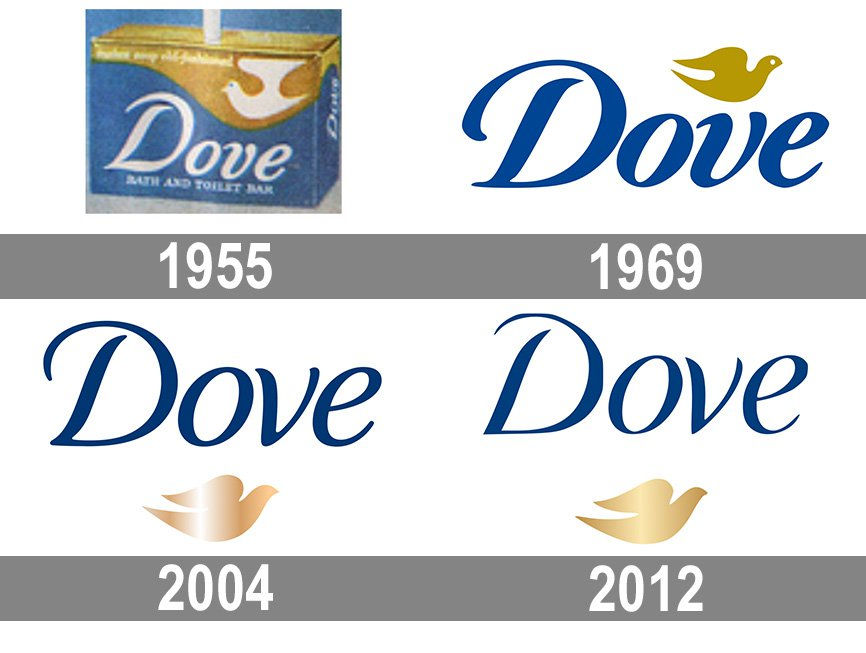The Strategy of Brand Storytelling: Building Trust and Loyalty
- VEXA agency

- Jun 10
- 9 min read

Storytelling has long been a powerful communication tool deeply rooted in human society and culture. In marketing, the strategic use of brand storytelling not only captures attention but also conveys deeper meaning and purpose—allowing brands to connect with audiences on an emotional level. In other words, rather than simply delivering promotional information, an engaging narrative becomes a bridge of trust between the brand and the consumer.
In this article, designed for marketing managers, we will explore the topic of “connecting with consumers through brand storytelling” based on theory and research. We’ll examine how brand narratives can increase consumer trust and loyalty, supported by scientific insights, real-world success cases, storytelling techniques, and core strategies—such as origin stories, customer journeys, and purpose-driven narratives.
Brand Storytelling, Trust, and Loyalty: Theoretical and Research-Based Foundations

Today’s consumers no longer focus solely on product quality and price—they also value a brand’s purpose, values, and story. Researchers emphasize that storytelling in branding is a psychological tool that humanizes a brand. When a brand shares an emotional and authentic story, consumers are more likely to form an emotional connection, which strengthens trust and gradually fosters long-term loyalty. Unlike traditional advertising, storytelling creates a more human and intimate relationship between brand and consumer.
One theoretical approach, known as emotional branding, suggests that emotional resonance influences consumer loyalty more than factual information. Leading global brands like Apple, Nike, and Airbnb don’t just promote their products—they tell stories that align with the consumer’s identity, shared values, and dreams. As a result, even when cheaper alternatives exist, consumers often choose brands that speak to their hearts through meaningful narratives.
Research also highlights the critical role of authenticity in storytelling. Consumers can quickly tell whether a brand is speaking from the heart or simply trying to manipulate emotions for profit. Stories that are grounded in real values, consistent, and free from exaggeration build greater trust and long-term brand loyalty. For instance, a study by Label Insight revealed that 94% of consumers consider transparency and openness to be key factors influencing their purchase decisions. In other words, when a brand fulfills its promises and demonstrates its principles through real actions, trust naturally follows.
Interestingly, the narrative transportation theory shows that when consumers become emotionally absorbed in a brand’s story—when they are “transported” into its narrative world—they are more likely to remember the brand and feel personally connected. This emotional engagement increases both the likelihood of purchase and long-term loyalty. Another study found that people remember information presented as a story up to 22 times more than when the same content is shared as plain facts. This explains why stories not only leave lasting impressions but also encourage repeat engagement with the brand.
Successful Brand Storytelling Examples (Global and Regional)

The theories and research clearly show how powerful storytelling can be in branding. To reinforce this point, let’s explore real-world examples of brands that have successfully implemented storytelling—both globally and regionally. These case studies demonstrate how a well-crafted brand narrative can significantly strengthen consumer trust and loyalty.
Patagonia – A Story Driven by Purpose and Values

Patagonia is a globally renowned example of a brand that has effectively turned its mission and social responsibility into a powerful narrative. This outdoor apparel company publicly declared from the beginning that its core mission is "to use business to implement solutions to the environmental crisis." Founder Yvon Chouinard’s philosophy of sustainability and environmental responsibility is deeply embedded in every product and every step of Patagonia’s marketing.
The strength of Patagonia’s brand story lies in how closely it aligns with the values of its audience. Because the company prioritizes nature and sustainability, its story resonates with eco-conscious consumers who see Patagonia as an extension of their own values and beliefs. As one of the brand’s executives once noted, "People are looking for even the smallest sources of hope in a chaotic world."
By taking a bold and clear stance as an environmentally active brand, Patagonia has transformed from just a clothing company into a movement. Consumers view Patagonia not just as a brand—but as a trusted partner that shares their values and stands for something meaningful.
Dove – A Brand Story Rooted in Social Awareness

Dove’s “Real Beauty” campaign is a powerful example of how a brand can successfully integrate social awareness and the pursuit of positive change into its narrative. Instead of following the traditional path of advertising beauty products, this campaign aimed to redefine beauty standards and boost self-confidence among women.
Dove traveled to various countries and interviewed women of different ages, appearances, and backgrounds, asking: “How do you define beauty?” Their real, personal stories were captured and shared through compelling visual content. In one memorable ad, ordinary women had their portraits taken by a professional artist and were asked to evaluate the images themselves—revealing how critically they viewed their own appearance. The emotional impact on viewers was immediate and powerful.
Through this socially driven narrative, Dove succeeded in resonating deeply with its audience, elevating the brand’s value far beyond product quality alone. By highlighting real women in contrast with rigid beauty norms, Dove challenged societal standards and empowered a broader audience to feel confident in their natural selves.
Throughout the campaign, Dove positioned itself as a brand that actively speaks out against unhealthy pressures and stereotypes in the beauty industry. It cultivated an image of responsibility, authenticity, and empowerment. As a result, consumers came to see Dove not just as a soap or skincare brand, but as a trustworthy voice for societal good and a partner in personal empowerment.
Nike – Relentless Progress

One of the key reasons Nike has earned worldwide recognition and loyalty is the brand’s powerful and consistent storytelling strategy. Since launching its iconic slogan “Just Do It” in 1988, Nike has embedded a simple phrase with a profound meaning—urging people to overcome both internal and external limitations and take bold action. This slogan is not just a marketing line; it forms the very foundation of Nike’s brand philosophy. The message of empowering people through sport and overcoming personal barriers is reflected in every Nike product and campaign, inspiring millions.
A hallmark of Nike’s storytelling is the diversity and depth of its characters and narratives. Rather than only showcasing elite athletes, Nike features both famous sports figures and everyday individuals in its campaigns.
For instance, in the 2012 “Find Your Greatness” campaign, Nike spotlighted ordinary kids and young people using sport to conquer their personal challenges. The campaign delivered a powerful message: “Greatness” isn’t reserved for Olympians or superstars—it’s something everyone can find within themselves. This message resonated deeply, making the story personal and empowering for all viewers.
Nike’s approach shows that even everyday people can be heroes. That relatability—framed through emotional storytelling—is one of the brand’s most compelling tactics. Nike campaigns are often described as short films, emotionally charged and packed with inspiration.
Examples include the famous ad where basketball legend Michael Jordan talks about learning from his failures on the road to success, or the moving portrayal of wrestler Bilyal Makhov’s struggle and triumph. These stories show the painful reality behind victory, reinforcing Nike’s belief in perseverance and human strength.
In 2018, Nike released “Dream Crazy” featuring NFL quarterback Colin Kaepernick, which sent a bold message about social justice—reminding the world that sport can also be a platform for societal change. Though controversial, the campaign strengthened Nike’s identity as a brave, values-driven brand. By staying true to its principles, Nike gained the trust and respect of a new generation of socially conscious consumers.
Crafting an Emotional, Engaging, and Meaningful Brand Story

Telling your brand’s story effectively is much more than casual conversation—it’s a strategic and creative process. To create a narrative that touches emotions, captures attention, and delivers meaningful value, consider the following key principles and techniques:
Make Storytelling the Strategic Core: Storytelling should not be a one-off campaign—it must become a foundational pillar in your overall marketing strategy. Experts suggest integrating story elements into all forms of content, using relatable, personal narratives that reflect the interests and realities of your target audience. Rather than simply listing product benefits, focus on why your brand exists and what values it aims to spread. This helps establish emotional depth and long-term meaning in every message.
Understand and Reflect Your Audience: Know exactly who your story is for—and what they feel, need, and believe in. Create characters and journeys that align with your audience’s pain points, aspirations, and values. For example, Nike’s stories resonate globally because they reflect the dreams and struggles of the younger generation. Your story should feel so personal and familiar that customers see themselves in it—as if it’s their own story.
Follow a Powerful Narrative Structure: Strong stories typically follow the classical arc: beginning, conflict/challenge, climax, and resolution. Introduce a main character, show their struggle, and then portray their breakthrough. This emotional journey should ultimately provide clarity, satisfaction, and catharsis—leaving your audience uplifted. Without a satisfying resolution, too much drama may leave viewers unsettled. Therefore, balance the pacing, tension, and closure, while clearly delivering your brand’s core message and value.
Deliver Value and Insight: Every brand story should ultimately carry a moral—a takeaway, insight, or inspiration. When your audience walks away with more than just product information—when they feel enlightened, empowered, or encouraged—your brand becomes more memorable and emotionally meaningful. Harvard Business School research suggests that stories with embedded moral values and purpose are more likely to stick in consumers’ minds and influence purchase decisions. Always ask: “What value does the consumer gain by being part of our brand’s story?”
Be Honest and Transparent: Modern audiences are highly aware of over-polished, overly scripted marketing. Instead of portraying a perfect image, share your brand’s real journey—including failures, lessons, and moments of vulnerability. Authentic storytelling creates deeper trust. A brand that claims to be eco-friendly, for instance, must back that claim in its packaging, operations, and supply chain. If your words and actions don’t match, even the best story loses its power. True authenticity is the most important principle of effective storytelling.
Be Consistent Across All Channels: A brand’s story is not told in one ad—it unfolds across many platforms, becoming richer over time. In today’s multi-channel world, a consumer may encounter your brand on TV, Instagram, your website, or in a podcast. To build trust, your story must feel unified across all platforms. For example, if your Instagram tone is playful but your website is serious and cold, the narrative becomes confusing and untrustworthy. Align your voice, values, and style consistently across every touchpoint to strengthen impact.
Invest in High-Quality Content: Content delivery matters as much as the story itself. In a crowded, fast-paced digital world, audiences expect quality. Use professional visuals—videos, photography, audio, or even podcasts—to elevate your story. Leading brands collaborate with filmmakers, writers, and creatives to turn their brand stories into cinematic, shareable moments. Investing in quality production increases emotional engagement and makes it easier for consumers to share your story on their own.
Measure Impact and Continuously Improve: Brand storytelling is not a one-time act—it’s a continuous process that evolves with your audience. Use analytics to track engagement after each campaign: likes, shares, comments, views, and sentiment. Conduct brand perception studies to understand whether your narrative is shifting how consumers feel. Check if storytelling efforts are influencing sales, loyalty, or brand advocacy. These insights help you identify which parts of the story resonate and which need refining—ensuring your strategy stays relevant and results-driven.
By following these principles, your brand story becomes more than just scripted marketing—it becomes a living, emotional narrative that reaches your audience’s hearts. Done right, your story can inspire, connect, and build lasting memories. And most importantly, it lays the foundation for deep trust and long-term loyalty—because people don’t just buy products, they believe in the stories behind them.

Conclusion...
"Brand storytelling is the art of connection."
In today’s marketing world, brand storytelling is no longer just a trendy phrase—it’s a critical strategy. A well-crafted brand narrative goes beyond product or service information; it becomes an emotional and meaningful package that resonates with customers. It has the power to transform them from passive buyers into loyal partners who share in the brand’s purpose and success.
As Harvard Business School professor T.B. Avery notes:
“Brands use storytelling to bridge the gap between ‘what is’ and ‘what could be.’ In doing so, they become like a bandage for life’s small wounds—addressing people’s needs with meaning and care.”
In other words, an honest, emotionally rich story can shift a consumer from a passive observer to an active participant and loyal brand advocate.
For marketing managers, harnessing the power of narrative is more important than ever. Defining and telling your brand story with clarity and value is not just about selling products—it’s about mastering the art of winning hearts. And that emotional bond becomes the strongest foundation for long-term trust and loyalty, giving your brand a competitive edge that’s hard to replicate.
Lastly, when crafting and sharing your brand’s story, always base it on credible sources and real insights. Authenticity is what gives a story its power. If you’re aiming to build a deeper connection with your customers, we encourage you to apply the principles and strategies discussed above 📖✨.




Commentaires